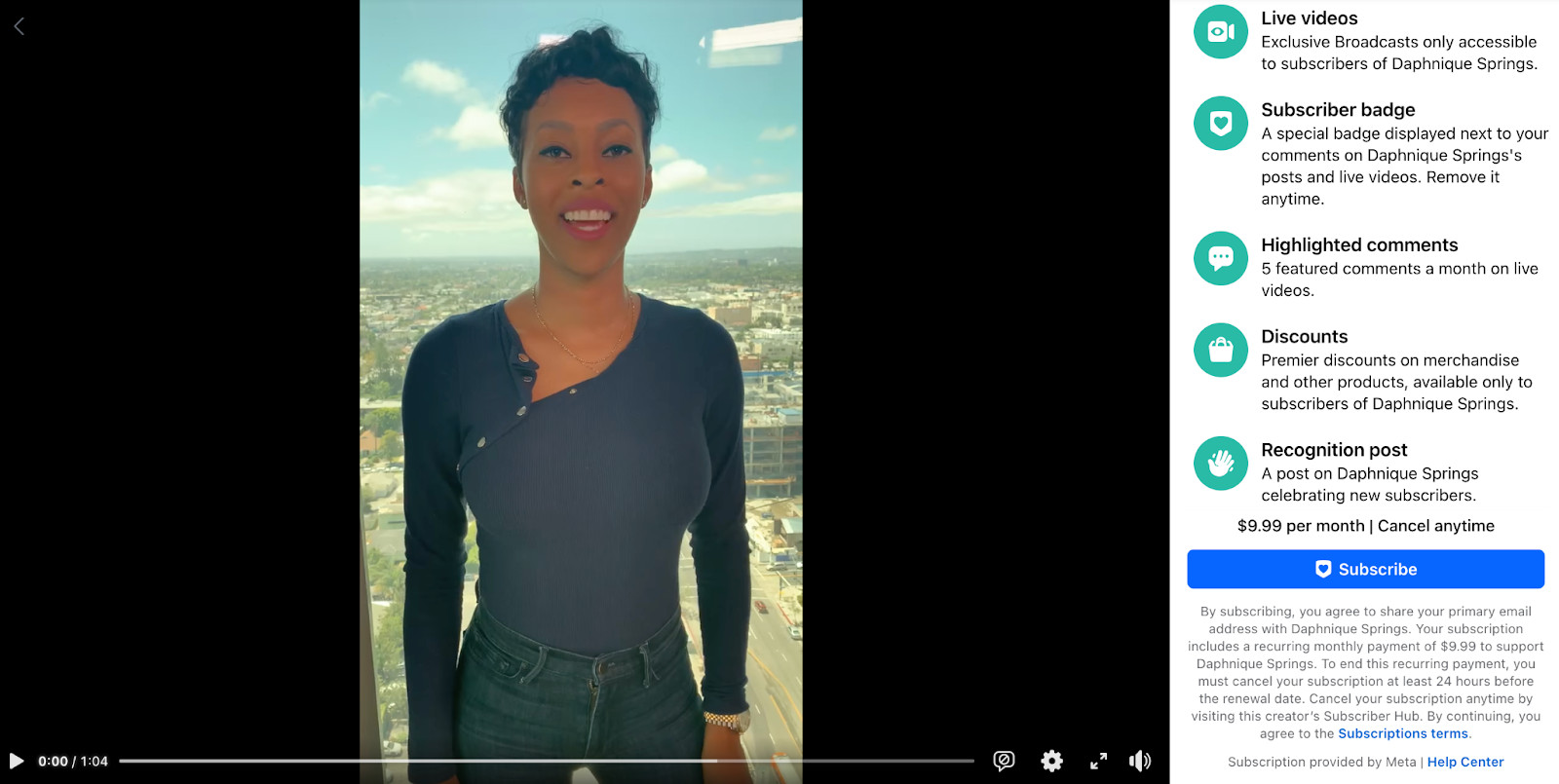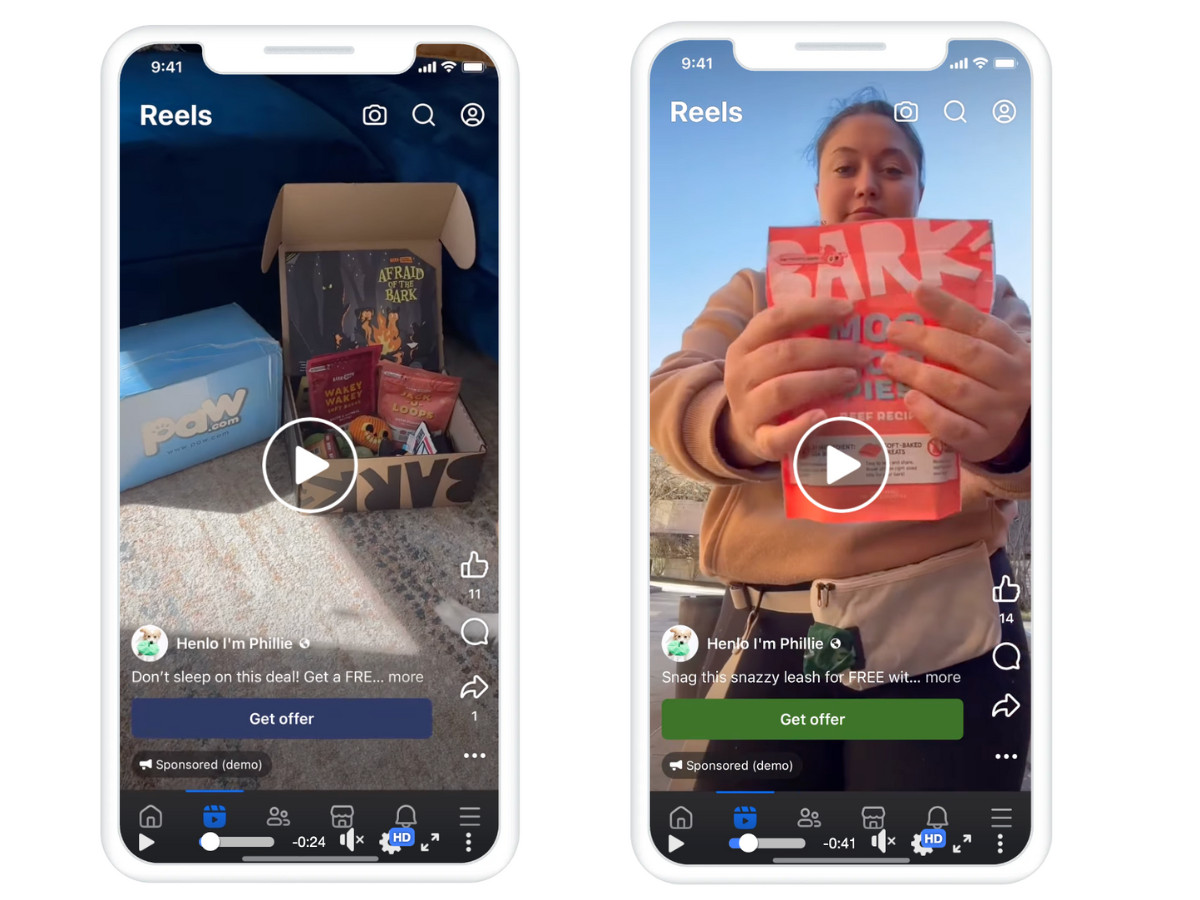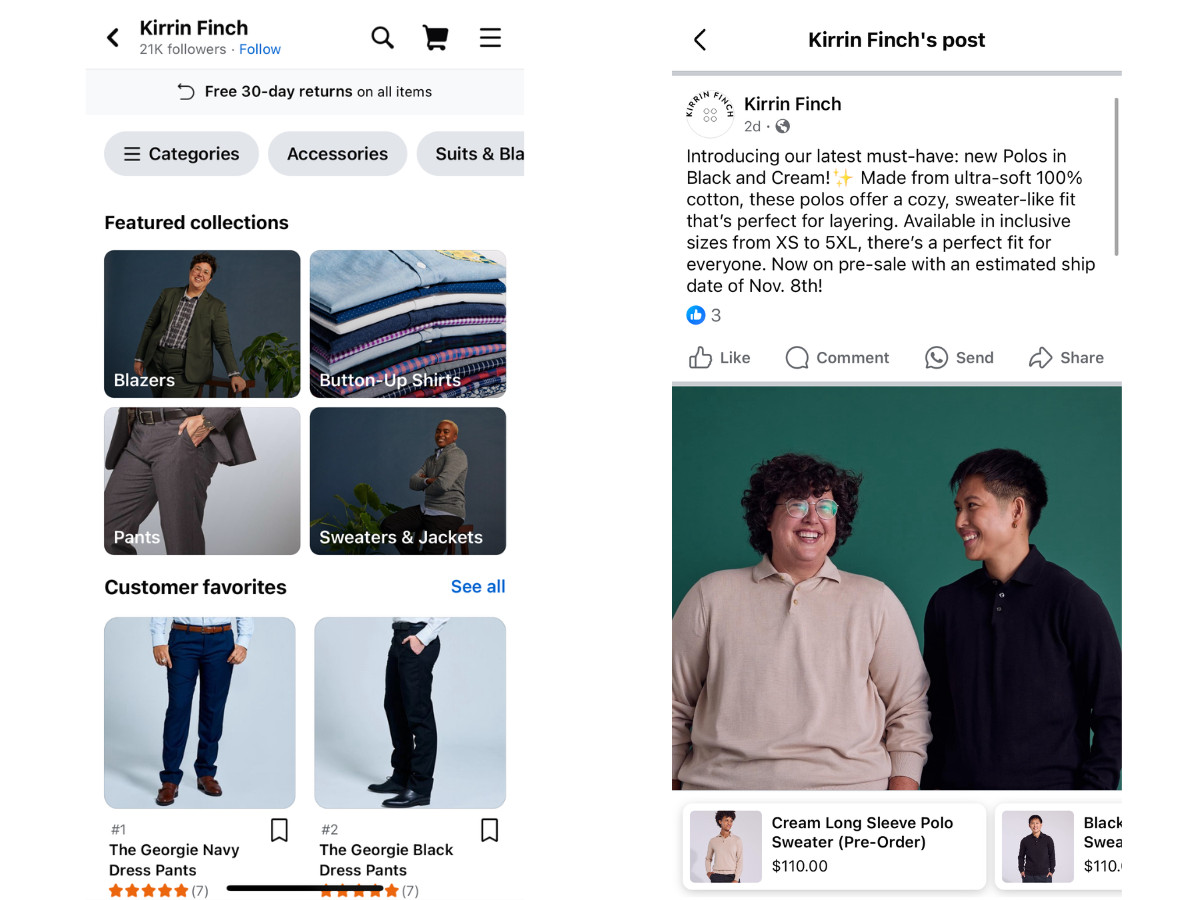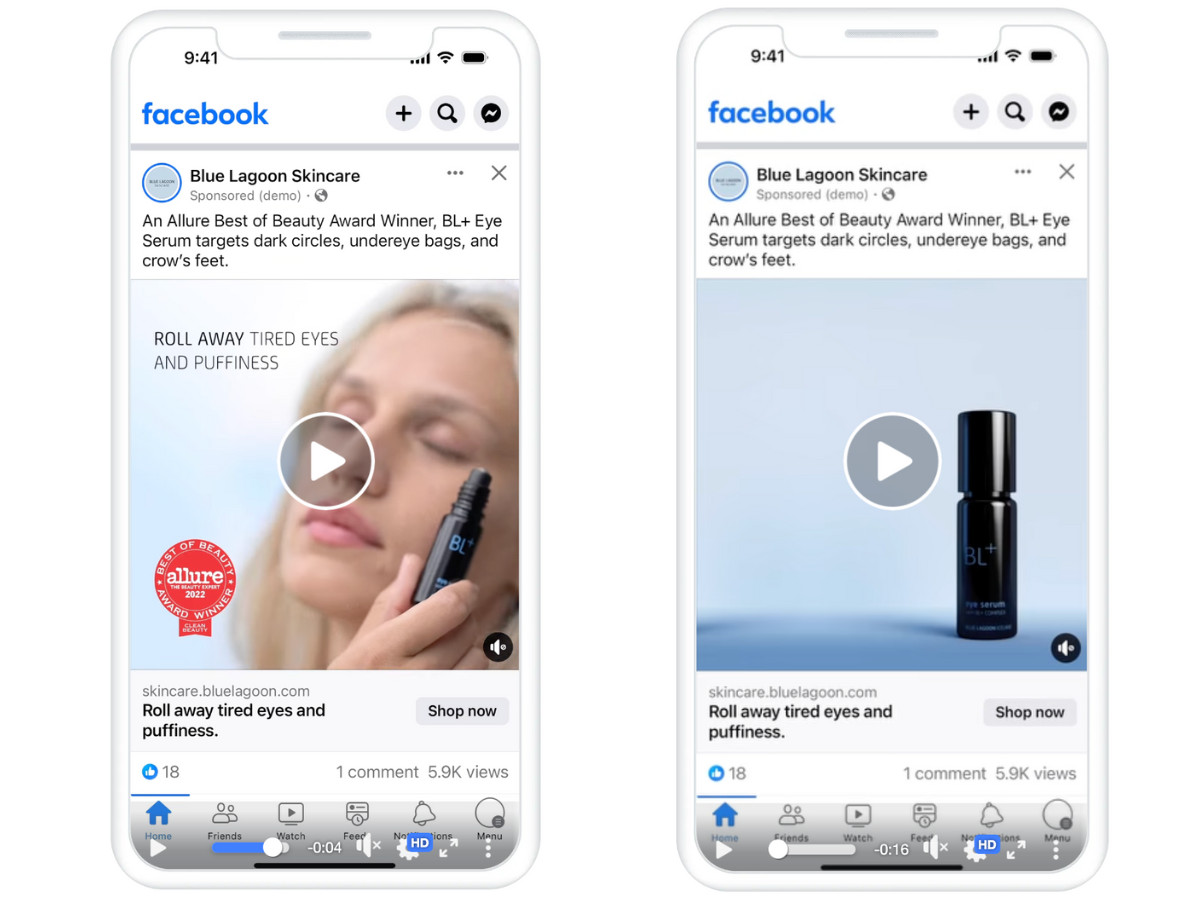Facebook remains a dominant force in the social media landscape, boasting billions of active users globally. According to Statista, Facebook’s user base dwarfs platforms like Instagram and TikTok, presenting unparalleled opportunities for content creators and businesses alike to generate substantial income. This vast audience is a goldmine waiting to be tapped, offering diverse avenues for monetization.
Whether you are an aspiring influencer, a seasoned content creator, or a business owner seeking new revenue streams, Facebook offers a plethora of tools and strategies to monetize your presence. Let’s delve into seven effective methods to start earning money from Facebook today.
7 Proven Ways to Monetize Your Facebook Presence
From leveraging exclusive content to tapping into the power of e-commerce, Facebook provides various pathways to profitability. Here are seven strategies to help you generate revenue on this powerful platform:
1. Unlock Recurring Revenue with Paid Subscriptions
Paid subscriptions are an excellent way to establish a consistent monthly income stream by offering exclusive content to your most dedicated followers. This model allows you to cultivate a thriving community around your content while ensuring predictable revenue from your target audience.
Think of it as creating a premium membership within your Facebook page. By offering valuable, members-only content, you incentivize your audience to subscribe and support your work directly.
For inspiration, look at comedian Daphnique Springs, who has successfully leveraged paid subscriptions to monetize her large Facebook following of 4.2 million. She provides exclusive content and perks to her subscribers for a monthly fee of $9.99.
 Comedian Daphnique Springs has 4.2 million followers on her Facebook page and uses paid subscriptions to monetize her content.
Comedian Daphnique Springs has 4.2 million followers on her Facebook page and uses paid subscriptions to monetize her content.
How to get started with Facebook Subscriptions:
To enable paid subscriptions, your Facebook Page needs to be in Professional mode and meet specific criteria. Currently, this feature is primarily invite-only, but you can aim to meet the general requirements which include:
- Follower Count: A minimum of 10,000 followers or more than 250 weekly returning viewers.
- Engagement Metrics: 50,000 post engagements or 180,000 watch minutes in the past 60 days.
- Eligibility: Adherence to Facebook’s Partner Monetization Policies.
Check your page’s eligibility in the Creator Studio or Meta Business Suite to see if you qualify for subscriptions or to express your interest.
2. Amplify Your Reach Through Brand Partnerships
Collaborating with brands is a cornerstone of content creator monetization on Facebook. Brands are willing to invest in content creators to produce sponsored content that enhances their brand awareness and expands their reach to new demographics. This symbiotic relationship benefits both parties, providing creators with income and brands with targeted exposure.
For business owners, partnering with social media influencers can be a game-changer. While it requires an initial investment, influencer collaborations can significantly boost sales, build brand trust, and generate authentic engagement. Facebook’s paid partnership ads further streamline this process, allowing you to feature influencer-created content promoting your products directly within your ad campaigns.
BarkBox, a popular subscription service for pet products, exemplifies the success of this strategy. A Facebook case study revealed that BarkBox’s partnership ads, utilizing engaging Reels-style content on Facebook and Instagram, resulted in a 13% increase in subscriptions compared to traditional advertising methods. This demonstrates the power of authentic influencer marketing on Facebook platforms.
 Two screenshots from a BarkBox Facebook and Instagram Reels partnership ad, showcasing dogs enjoying BarkBox products.
Two screenshots from a BarkBox Facebook and Instagram Reels partnership ad, showcasing dogs enjoying BarkBox products.
Getting started with Brand Partnerships:
For Content Creators:
- Utilize Facebook’s Paid Partnerships tool when posting sponsored content. Simply click the handshake icon, tag the brand’s page URL, and publish. This ensures transparency and compliance with advertising guidelines.
- Proactively reach out to brands that resonate with your niche and audience. Authenticity is key, so prioritize partnerships with brands you genuinely use and believe in.
- Build a media kit showcasing your audience demographics, engagement rates, and content portfolio to attract potential brand collaborations.
For Business Owners:
- Embark on your influencer marketing journey by identifying relevant creators whose audience aligns with your target market. Tools like Facebook Creator Marketplace can help you discover creators.
- Develop clear content guidelines and briefs to ensure that the sponsored content effectively communicates your brand message and campaign objectives.
- Plan a strategic outreach approach to connect with influencers, propose collaboration terms, and negotiate partnerships.
3. Receive Direct Support with Facebook Stars
Facebook Stars offer a direct avenue for your audience to financially support your content. Viewers can send Stars during your livestreams, videos, or even on text posts as a token of appreciation. For every Star you receive, Facebook pays you $0.01 USD, creating a tangible way for your audience to reward your engaging content.
Stars foster a sense of community and direct interaction, making your audience feel more connected to your work and incentivized to support you. It’s akin to receiving tips or donations, but directly integrated into the Facebook platform.
Requirements to start earning Facebook Stars:
- Followers: Achieve a minimum of 500 followers on your Facebook Page.
- Account Age: Your Facebook Page must be established for at least 30 days.
- Compliance: Adhere to Facebook’s Partner Monetization Policies.
Enable Stars in your Creator Studio or Meta Business Suite to activate this feature and start receiving support from your audience. Promote Stars during your live streams and engaging video content to encourage viewers to show their appreciation.
4. Leverage Content Monetization Tools for Ad Revenue
Facebook’s Content Monetization program consolidates various ad formats, including video ads, Reel ads, and performance bonuses, into a unified system. As of late 2024, this program is still in beta and operates on an invite-only basis for content creators. However, business owners can leverage video ads within creator content without needing a direct invitation to the program.
Video ads offer a significant monetization opportunity, allowing creators to earn revenue by displaying ads within their video content. For businesses, this provides a way to place targeted ads within relevant creator content, reaching engaged audiences. Best practices for video ads include keeping them concise (under 15 seconds) and offering a skip option to enhance user experience. Facebook supports ads ranging from 5 seconds to 10 minutes, providing flexibility in ad format.
Getting Started with Content Monetization:
For Content Creators:
- If you are an established content creator interested in generating advertising revenue, complete the content monetization interest form available in Creator Studio or Meta Business Suite. Express your interest and ensure your page meets the eligibility criteria for potential invitation to the program.
- Focus on creating high-quality, engaging video content to maximize ad views and revenue potential.
For Business Owners:
- Utilize Facebook Ads Manager to create video ads and target them to play within relevant creator content. This allows you to tap into engaged audiences and leverage the reach of content creators without direct program participation.
5. Establish a Facebook Shop for Direct Sales
Social commerce is rapidly expanding, with a significant portion of consumers now making purchases directly through social media platforms. A Facebook Shop enables you to sell products directly from your brand’s Facebook page, providing a seamless mobile checkout experience for buyers. This integration transforms your Facebook presence into a virtual storefront, streamlining the purchasing process and capitalizing on social buying trends.
For Shopify merchants, integrating your Shopify store with Facebook Shop is seamless. This connection allows you to synchronize your product catalog, manage inventory, and process orders directly through your Shopify backend, while selling directly on Facebook. Customize your shop with product collections, promotional banners, and detailed product descriptions to create an engaging shopping experience. Facebook Shops are optimized for mobile devices and require on-platform checkout, ensuring a smooth user journey.
 The Facebook shop of Kirrin Finch, showcasing their clothing products with clear pricing and product details.
The Facebook shop of Kirrin Finch, showcasing their clothing products with clear pricing and product details.
Steps to Create a Facebook Shop:
- Set up a Facebook Business Page for your brand if you haven’t already.
- Create a product catalog within Facebook Commerce Manager, or connect your existing Shopify or e-commerce platform.
- Add compelling product photos, detailed descriptions, and organize your products into collections.
- Customize your shop’s appearance with banners and branding elements to align with your brand identity.
6. Tap into Local Markets with Facebook Marketplace
Facebook Marketplace, with its massive user base of over one billion monthly active users, connects casual sellers and businesses with local buyers. This platform is ideal for reaching customers within your geographical area, fostering local commerce and community engagement. To succeed on Marketplace, craft compelling product descriptions highlighting key features and benefits, and categorize your listings accurately to improve discoverability. Joining relevant local selling groups can further amplify your reach and connect you with targeted buyers.
Getting Started on Facebook Marketplace:
- To list items on Facebook Marketplace, navigate to the Marketplace section and select “Create New Listing.”
- Provide detailed product information, pricing, high-quality images, and choose appropriate categories.
- Be mindful of Facebook’s Commerce Policies, as certain product categories, such as healthcare items, are restricted.
- Engage with potential buyers promptly and manage inquiries efficiently to facilitate successful sales.
7. Drive Shop Traffic with Facebook Shops Ads
Facebook Shops ads are designed to directly drive sales by connecting viewers to your Facebook Shop. These ads can direct shoppers to your shop’s homepage, specific product pages, or curated collection pages showcasing multiple items. You have the flexibility to choose between manual ad creation for precise control or automatic updates that dynamically sync with your product catalog, simplifying ad management.
Shops ads are a powerful tool for promoting your Facebook Shop and increasing product visibility to interested buyers. They leverage Facebook’s advertising capabilities to target relevant audiences and drive traffic directly to your online store within Facebook.
 Two screenshots of a Facebook Shop ad for Blue Lagoon Skincare, featuring product images and a clear call to action to shop now.
Two screenshots of a Facebook Shop ad for Blue Lagoon Skincare, featuring product images and a clear call to action to shop now.
Launching Facebook Shop Ads:
- Ensure you have an active Facebook Shop and a synchronized product catalog.
- Access Facebook Ads Manager to create Shop ads.
- Define your target audience, budget, and ad placements.
- Choose whether to manually create ads or utilize automatic updates linked to your product catalog for dynamic ad content.
- Monitor ad performance and optimize campaigns to maximize ROI and drive sales to your Facebook Shop.
Essential Requirements for Facebook Monetization
Regardless of whether you are a business aiming to sell products or a content creator aspiring to earn through Stars and subscriptions, your Facebook Page or profile must meet specific eligibility criteria to access monetization features.
Facebook enforces community guidelines that prohibit content related to bullying, scams, violence, and graphic material. Violations of these guidelines can lead to loss of monetization eligibility. Regularly check your monetization status within Meta Business Suite (for business pages) or your professional dashboard (for creator profiles) to ensure compliance.
General Eligibility Requirements include:
- Professional Mode: Set your Facebook profile or Page to professional mode to access creator tools and monetization features.
- Established Presence: Maintain an active Facebook presence for at least 30 days.
- Authentic Content: Post original, authentic content that adheres to Facebook’s content policies.
For Facebook Marketplace sellers, the primary requirement is being at least 18 years old and adhering to the platform’s terms of service and commerce policies.
Frequently Asked Questions about Making Money on Facebook
Is it actually possible to make money on Facebook?
Absolutely, yes. Facebook provides a range of features that empower both content creators and businesses to monetize their content and drive sales effectively. Options like brand collaborations, subscription models, and Facebook Shops offer diverse income streams.
How many views are needed to get paid on Facebook?
View requirements vary depending on the specific monetization method. For setting up paid subscriptions, you generally need either 250 weekly returning viewers or 10,000 followers. Selling on Marketplace does not typically have view-based requirements. For ad revenue through content monetization, specific view or engagement metrics may apply as per program guidelines.
What are the payment methods on Facebook?
Facebook offers various payment methods depending on the monetization feature. These include payouts from subscription revenue, earnings from Stars, sales proceeds from Facebook Shop, and transaction revenue from Marketplace sales. Payment methods and schedules may vary based on the specific feature and Facebook’s payout policies.
How many followers are necessary to make money on Facebook?
Follower requirements depend on the chosen monetization strategy. While Facebook Marketplace does not mandate a follower count, earning Stars requires a minimum of 500 followers, and subscription revenue typically requires either 10,000 followers or 250 weekly returning viewers. Brand partnerships may also consider follower count and engagement as factors in collaboration opportunities.
